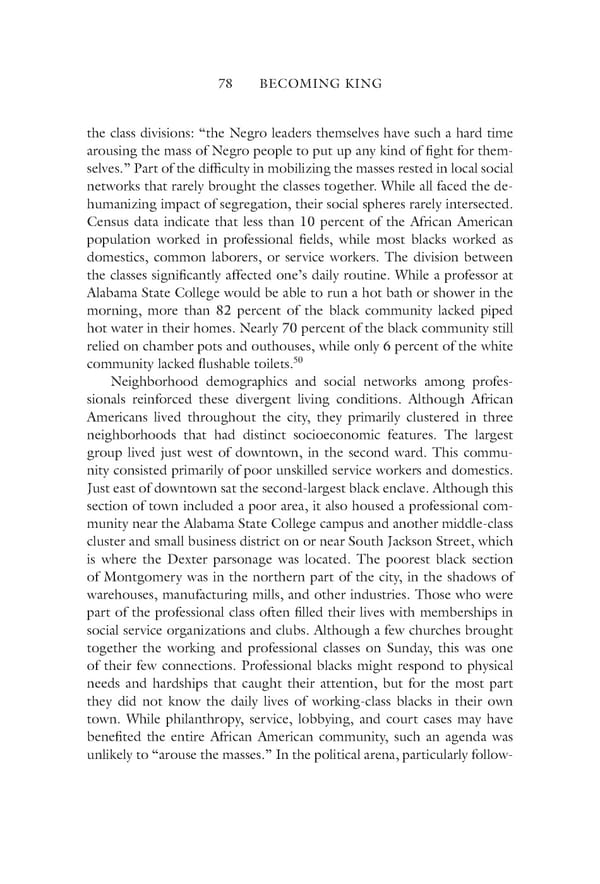78 BECOMING KING the class divisions: “the Negro leaders themselves have such a hard time arousing the mass of Negro people to put up any kind of fight for them- selves.” Part of the difficulty in mobilizing the masses rested in local social networks that rarely brought the classes together. While all faced the de- humanizing impact of segregation, their social spheres rarely intersected. Census data indicate that less than 10 percent of the African American population worked in professional fields, while most blacks worked as domestics, common laborers, or service workers. The division between the classes significantly affected one’s daily routine. While a professor at Alabama State College would be able to run a hot bath or shower in the morning, more than 82 percent of the black community lacked piped hot water in their homes. Nearly 70 percent of the black community still relied on chamber pots and outhouses, while only 6 percent of the white 50 community lacked flushable toilets. Neighborhood demographics and social networks among profes- sionals reinforced these divergent living conditions. Although African Americans lived throughout the city, they primarily clustered in three neighborhoods that had distinct socioeconomic features. The largest group lived just west of downtown, in the second ward. This commu- nity consisted primarily of poor unskilled service workers and domestics. Just east of downtown sat the second-largest black enclave. Although this section of town included a poor area, it also housed a professional com- munity near the Alabama State College campus and another middle-class cluster and small business district on or near South Jackson Street, which is where the Dexter parsonage was located. The poorest black section of Montgomery was in the northern part of the city, in the shadows of warehouses, manufacturing mills, and other industries. Those who were part of the professional class often filled their lives with memberships in social service organizations and clubs. Although a few churches brought together the working and professional classes on Sunday, this was one of their few connections. Professional blacks might respond to physical needs and hardships that caught their attention, but for the most part they did not know the daily lives of working-class blacks in their own town. While philanthropy, service, lobbying, and court cases may have benefited the entire African American community, such an agenda was unlikely to “arouse the masses.” In the political arena, particularly follow-
 Becoming King: Martin Luther King Jr. Page 98 Page 100
Becoming King: Martin Luther King Jr. Page 98 Page 100